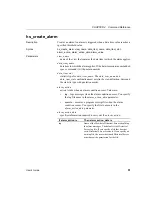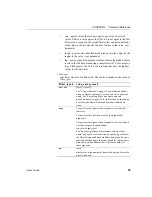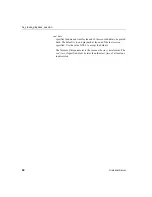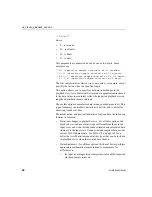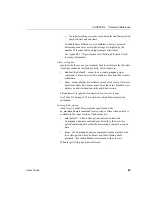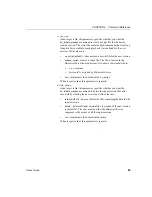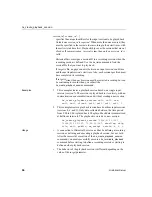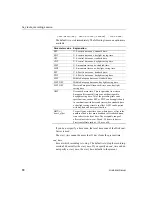
hs_create_filter
56
Historical Server
Examples
This example creates a filter for a view named Page I/O. The view contains
the Page I/O data item with a “Value for Session” statistic type. The
example limits the rows recorded for a sample to the 20 rows that have the
highest total number of Page I/Os for the recording session to date.
hs_create_filter PageIO,"Page I/O","Value for
Session",top,20
Usage
Using multiple filters in a view
Filters limit the amount of data that Historical Server records. Each filter
applies to one data item in the view. Each data item can have only one filter
applied to it.
If multiple data items in a view have filters, Historical Server records data
that satisfies all of the individual filters. Effectively, the Boolean AND
operation is applied to the values of the various filters.
If the
top
filter is in effect for a data item and another filter is in effect for
a second data item, some of the values passed by the
top
filter may be
eliminated by the other filter. The result is that less that specified
top
n
values are returned.
Using wildcards
The wildcard character is the percent sign (%). When filter_type is
eq
or
neq
, you can use the wildcard in value_spec for data items that return
character strings.The wildcard matches any string of zero or more
characters. The wildcard can appear anywhere within the filter value
(beginning, end, or anywhere in between). Only a single instance of the
wildcard can appear in value_spec.
An exception to the single instance rule for the wildcard pertains to the
Object Name and Procedure Name data items. In those multi-component
data items, you can use a single instance of the wildcard in each
component. See “Specifying filters on object name and procedure name”
on page 56 for more information.
When filter_type is
range
, you cannot use the wildcard character in
value_spec.
Specifying filters on object name and procedure name
The Object Name and Procedure Name data items accept multi-
component values in value_spec when filter_type is
eq
,
neq
, and
range
.
These composite filter values can use the following name forms, where
object_name is either a table name or a stored procedure name:
•
object_name
Содержание 12.5.1
Страница 1: ...User s Guide Historical Server 12 5 1...
Страница 14: ...xiv Historical Server...
Страница 46: ...Configuring multiple instances of Historical Server 32 Historical Server...
Страница 56: ...Starting and stopping Historical Server on Windows NT 42 Historical Server...
Страница 102: ...hs_terminate_recording 88 Historical Server...
Страница 204: ...Transaction activity 190 Historical Server...










